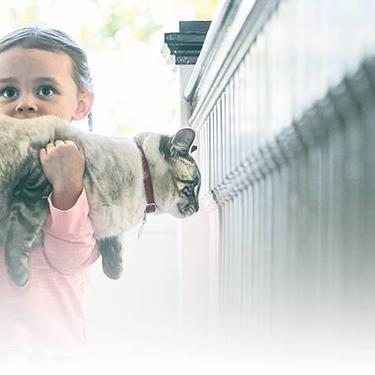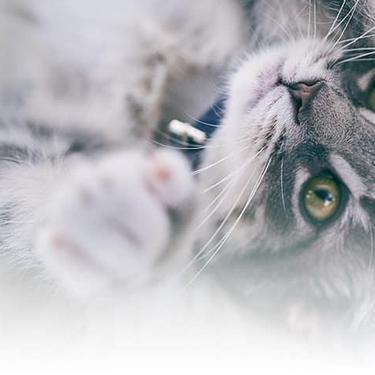
-
Find the right food for your petTake this quiz to see which food may be the best for your furry friend.Find the right food for your petTake this quiz to see which food may be the best for your furry friend.Health CategoryFeatured products
 Hill's Science Diet Adult Healthy Mobility Large Breed Chicken Meal, Barley & Brown Rice Recipe Dog Food
Hill's Science Diet Adult Healthy Mobility Large Breed Chicken Meal, Barley & Brown Rice Recipe Dog FoodAdvanced nutrition shown to support joint health and improve mobility
Shop Now Adult Light Large Breed Chicken Meal & Barley Recipe Dog Food
Adult Light Large Breed Chicken Meal & Barley Recipe Dog FoodFewer calories for less active large breed dogs
Shop Now Adult Large Breed Chicken & Barley Recipe Dog Food
Adult Large Breed Chicken & Barley Recipe Dog FoodSupports healthy joints, lean muscle, and beautiful coat for large breed dogs
Shop NowFeatured products Adult Perfect Digestion Chicken, Barley & Whole Oats Recipe Cat Food
Adult Perfect Digestion Chicken, Barley & Whole Oats Recipe Cat FoodHill's Science Diet's breakthrough nutrition supports ultimate digestive well-being & healthy microbiome
Shop Now Adult Oral Care Chicken & Brown Rice Recipe Cat Food
Adult Oral Care Chicken & Brown Rice Recipe Cat FoodClinically proven kibble technology to reduce plaque & tartar build-up
Shop Now Adult Sensitive Stomach & Skin Pouch Variety 12 Pack Cat Food, Chicken & Beef, Salmon & Tuna
Adult Sensitive Stomach & Skin Pouch Variety 12 Pack Cat Food, Chicken & Beef, Salmon & TunaCarefully made, gourmet daily nutrition. Tasty chunks with Salmon & Tuna in a decadent gravy. Supports digestive health, nourishes skin and promotes a lustrous fur.
Shop Now -
DogCat
- Cat Tips & Articles
-
Health Category
- Weight
- Skin & Food Sensitivities
- Urinary
- Digestive
- Kidney
- Dental
- Serious Illness
-
Life Stage
- Kitten Nutrition
- Adult Nutrition
Featured articles Cat vs. Dog: Which Is the Best Pet for Me?
Cat vs. Dog: Which Is the Best Pet for Me?Learn about important differences between dogs and cats, such as cost & space considerations. These factors can help you decide which pet is best for you.
Read More Fun Ideas for Kids and Pets This Summer
Fun Ideas for Kids and Pets This SummerOutdoor summer activities with your dog or cat can be fun for kids, too. Learn how they also teach kids responsibility & creates a bond with their pet.
Read More Adopting a Pet: What You Need to Know
Adopting a Pet: What You Need to KnowLearn the basics of adopting a pet, including where to begin and common questions you should ask yourself when deciding which kind of pet is best for you.
Read More -


When training your cat, you'll start with very basic first steps that both reward good behaviour and discourage the bad. But can you train a cat the same way you might train a dog? Yes and no. Cats are highly independent animals so might appear aloof or uninterested in following your commands. That doesn't mean you can't influence their behaviour. If you're patient and consistent, your new kitten or older cat can be trained in no time.
What Do You Want to Train?
First, determine what you'd like your cat to learn, then move towards achieving it in small steps each day. Before you start training your cat consider which commands you'll use and what types of behavioural actions you want to teach.
Some common objectives include:
- House training or litter training.
- Coming to you when you call or gesture.
- Staying calm and still for grooming.
- Interacting with you, other people, or other animals.
- Playing with toys, with you, or with another cat.
- Calm travelling (getting into a carrier and riding in the car).
There are many important reasons to train your cat. But above all it will help your cat become social and content around humans and other animals. Training is also important for your own well-being; if your cat learns to be calm during nail-trimming or travel, there will be no anxiety for either of you. The better mannered your cat is, the better your relationship will be.
Keep Each 'Session' Short and Natural
Having determined which lessons you and your cat will master it's time to get down to business. First and foremost, your cat's attention span is shorter than yours. Let your cat dictate how long they’re willing to be trained.
Because some kittens take to potty training quickly, (or even before coming home with you) by watching their mother use a litter box, this type of training may be brief. However, you may still need to lead your kitten back to the litter box in the early stages to remind them where it is. If you're training your kitten to play with toys (and you) the lessons might be more gradual. Cats often prefer to explore new toys on their own, which means your role should be to respect their space while remaining approachable during exploration. Once acquainted with a new item you can participate.
Start Small
If you're excited about training, you may want to jump right in and teach your cat everything at once. To be successful it's better to practice one lesson at a time. Once your cat has mastered one you can move to the next training exercise. When bringing a new kitten home you may decide to start with litter training. Once done with that you could work on the interaction with other pets, then calm grooming, and so on.
Don't Limit to One Area
Once your cat has learned a command, practice in different areas of your home. If you're introducing a kitten to other pre-existing pets and you only bring them together in one room, your kitten may believe the other animals only exist in that space. This isn't a problem if your other animal is a fish, but if your kitten is meeting a dog, they need to understand that they will encounter the dog in other areas too.
Much like litter training, some types of training may require using different areas of your home. If you are house training a cat, it's sometimes necessary to have more than one litter box available. Keeping cats from scratching the carpet and furniture will also warrant a more comprehensive lesson.


Tasty Tips
Involve Other People

If the only two residents are you and your cat, you don't have to worry too much about involving others in the training process. You do still want your cat to learn to be social, not territorial. Shortly after bringing your cat home, invite friends or family members over to socialise with your new pet. Just remind them not to be too forward with their introduction. Just as you practice training in small spurts, you should allow your pet the same leeway.
If you're bringing a kitten into a larger family, it's even more important to involve everyone in the training process. There are many reasons why the entire family should get involved, but it's most important for consistency and relationship-building. Everyone should be clear on the training goals and which methods you'll employ to be successful.
Use A Reward System
Rewards to reinforce good behaviour are great motivators, especially during training. There are two types of rewards for your furry new friend to test out. First, know you cat will enjoy any positive praise you have to share. Speak in a kind, upbeat voice and remind them how proud you are. Give praise while petting so they know these gestures mean well.
Cats also respond well to treats. Reward with small kibbles of Science Plan cat food when the commands you're working on are correctly mastered. One way to do this is to use a "clicker" system. When your cat performs the right behaviour or action, sound a tool that clicks, and then give a treat that signals a job well done. Hearing this noise each time will reinforce the good behaviour you've trained.
If It Isn't Working
Training doesn't happen overnight, and sometimes your cat will make a mistake. Can you train a cat to bounce back from it? Of course, but before you begin, you should come up with a plan for how to correct or guide when they seem reluctant to catch on. Punishment doesn't work when you're trying to train a kitten because your cat simply won't understand why they’re in trouble. In fact, it could make the situation worse and your cat more reclusive.
You should never slap, shake, or physically correct your kitten during training, and don't forget to keep your voice calm. If your cat feels threatened, not only will training begin to fail, but they'll also learn to be afraid of you.
If you do need to redirect bad behaviour (like scratching furniture) try making a quick, sharp noise. It'll also help if you say the same phrase, such as "Bam!" "Whoa!" or "Yow!" The point is to make your cat alert, and distract from the current action or behaviour. Avoid words that you regularly use, like "no!" or "hey!" as your cat will get confused when they hear it in a different context.
Learning how to train your cat can be a fun experience for your entire family. Just remember to be patient and positive, and you'll both get there.


Erin Ollila believes in the power of words and how a message can inform—and even transform—its intended audience. Her writing can be found all over the internet and in print, and includes interviews, ghostwriting, blog posts, and creative nonfiction. Erin is a geek for SEO and all things social media. She graduated from Fairfield University with an M.F.A. in Creative Writing. Reach out to her on Twitter @ReinventingErin or learn more about her at http://erinollila.com.
Related products

Clinically proven kibble technology to reduce plaque & tartar build-up

Delicious tender chicken and rice in a mouthwatering sauce with precisely balanced nutrition to support 5 essential building blocks for lifelong health

Carefully made, gourmet daily nutrition. Tasty chunks with Salmon & Tuna in a decadent gravy. Supports digestive health, nourishes skin and promotes a lustrous fur.

Hill's Science Diet's breakthrough nutrition supports ultimate digestive well-being & healthy microbiome
Related articles

Get helpful information on proper feline oral healthcare and why it's so vital to take care of your cat's teeth.

Provide the best possible treatment for cats with sensitive skin by spotting the signs, knowing the causes, and understanding the remedies. Learn more now.

Obesity affects more than 30 percent of cats in America. Learn how you can properly feed and exercise your cat to improve its weight management.

Understand the symptoms of a chronic upset stomach in your cat, and learn how to help sooth their discomfort.

Put your cat on a diet without them knowing
Our low calorie formula helps you control your cat's weight. It's packed with high-quality protein for building lean muscles, and made with purposeful ingredients for a flavorful, nutritious meal. Clinically proven antioxidants, Vitamin C+E, help promote a healthy immune system.
Put your cat on a diet without them knowing
Our low calorie formula helps you control your cat's weight. It's packed with high-quality protein for building lean muscles, and made with purposeful ingredients for a flavorful, nutritious meal. Clinically proven antioxidants, Vitamin C+E, help promote a healthy immune system.

